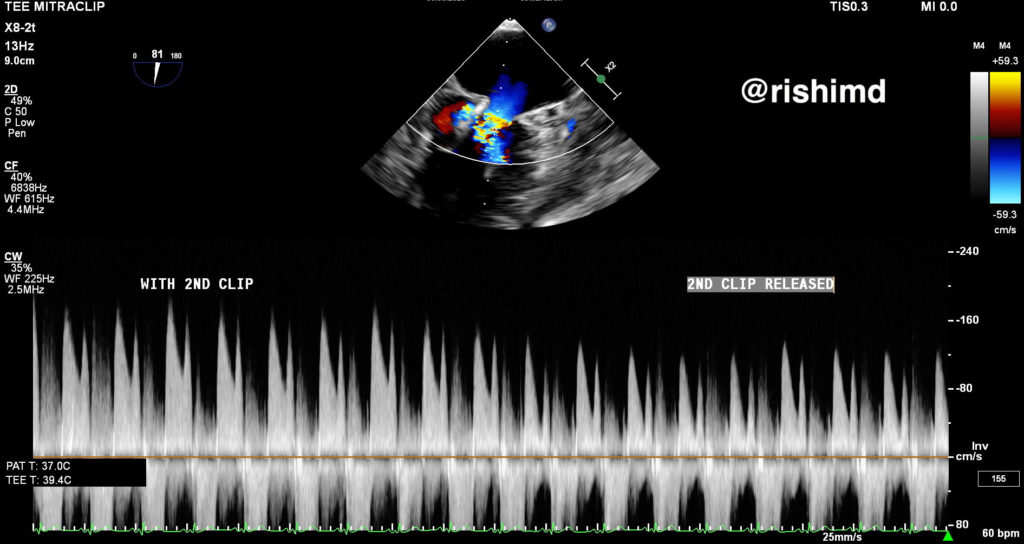MitraClip is a percutaneous edge-to-edge mitral repair device approved for degenerative and functional mitral regurgitation (MR). Regurgitant jets are localized using transesophageal echocardiography, and the clip is guided such that it grasps the anterior and posterior mitral leaflets at the origin of the regurgitant jet. This is sometimes trickier than it sounds, and often times multiple clips are placed; however, with each additional clip deployment, the mitral valve’s diastolic orifice area is decreased potentially leading to iatrogenic mitral stenosis (MS). For this reason, with each clip, we measure mitral inflow velocities/gradients to ensure that the improvement in MR does not translate to severe MS.
The mean pressure gradient can be obtained by integrating the velocity-time curve (below) during diastolic inflow through the mitral valve taking into account the loading conditions (heart rate, blood pressure, influences of general anesthesia, etc.). In the first half, one can see the velocities are higher with the second MitraClip attached. When integrated, this region showed a mean gradient of 8 mmHg. As this clip was slowly ungrasped, the inflow velocities decreased (second half of the spectral doppler profile) corresponding to a mean gradient of 3 mmHg.

The improvement in MR from the second clip did not justify the degree of MS that was created, so the second clip was ultimately released and the procedure completed.





